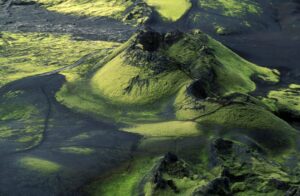Nagoya is a city of a million people and this extreme storm caused the deaths of 5,000 people plus the destruction of all kinds of homes and public buildings.
On September 26, 1959, Nagoya, a Japanese city of more than a million people, as well as much of the rest of Japan, experienced the most severe typhoon of modern times. Typhoon Vera struck the southern part of Nagoya with winds of more than 135 mph, flooding the entire area. The west bank of a river collapsed, and 1,851 residents were killed, 118,000 buildings were damaged or destroyed, and over 530,000 people were made homeless.
In central Japan, rain-choked streams surged over their banks. Railroads, cut in more than a hundred places, became useless. As Vera continued its destructive traverse across the country, the numbers of dead and homeless increased. By the time the storm had moved out into the Pacific the country had to face the tragedy of 5,000 deaths, 32,000 or more injured, and a million and a half homeless.
Vera was number fifteen in the series of typhoons that Japan had already experienced in 1959, most of them fortunately much weaker than Vera which began as a tropical depression in the Mariana Islands on September 20, more than two hundred miles away from Japan. Japan’s Meteorological Agency (JMA) issued a warning about Vera while it was still in the Marianas and only a tropical depression because its direction of travel was toward Japan’s Honshu Island and the surrounding high and low pressure systems indicated that Vera would maintain its direction of travel.
From September 20 to 26, Vera continued in the same direction, just as the JMA had predicted, gathering strength and moving from depression status to tropical storm and then to typhoon. Late on Saturday September 26 it roared into Nagoya. The Japanese are quite accustomed to typhoons and they had already experienced several in 1959 so, as warnings of the storm’s approach came to them early in the day, they put up storm shutters and purchased extra supplies of food and water, assuming that this typhoon would be like many others, troublesome and costly in terms of physical damage but not a serious threat to human life. This time their assumptions were wrong.
The tide was at its maximum as the storm hit Nagoya so the city received a wall of water seventeen feet high. The weight of this volume of water, coupled with the pressure of the wind, was sufficient to knock down every obstacle in the path of the storm, including sea walls, dikes, dams, and buildings of all kinds. Homes were quickly overwhelmed with water and most of the people within were drowned. A few escaped to higher ground. The typhoon continued its rampage across the city for two or three hours before moving on into the rest of Honshu. Everywhere there were scenes of confusion and despair. All communications with the rest of the country had been cut off so there was considerable delay in getting information to Tokyo and initiating relief work.
Furthermore, there was an assumption by the government of Japan that a city of the size of Nagoya could handle its own needed relief measures. Some U.S. military forces that were still stationed in the country joined in the rescue work and dropped supplies of food, clothing, and medicine to accessible points on higher ground. They also rescued by helicopter as many people as they could from the roofs of houses. Elsewhere on Honshu, Vera caused several landslides that in turn destroyed many homes. About a half million acres of cultivated farmland, and acres of oyster beds where cultured pearls were grown, all were devastated. It would take more than a year to restore them to service.
Typhoon Vera was named “Isewan Typhoon” by JMA. It was the equivalent of a category 5 on the Saffir-Simpson scale and was the strongest typhoon to hit Japan in recorded history. With winds at times as high as 160 mph, Vera will likely be recorded as one of Japan’s worst natural disasters. Vast areas of crops were destroyed, sea walls ruined, roads and railways greatly damaged, and rivers transformed into lakes, all contributing to a damage estimate of $261 million. The storm weakened over northern Honshu and finally moved into the northern Pacific Ocean on September 27. The combination of the death toll and the great number of people left homeless were responsible for large outbreaks of various diseases.
Nagoya implemented a comprehensive relief effort and, at the same time, received help and support from its sister-city, Los Angeles. At the time of the storm Nagoya was busy making arrangements to celebrate its seventieth anniversary and delegates from Los Angeles were in the city for the occasion. Other U.S. cities also provided relief assistance. In order to prevent a recurrence of this disaster, Nagoya launched a program of reconstruction to make its protective barriers much more resistant to storms than they had previously been. Breakwaters and embankments along rivers were built to a stronger code and to greater heights.





















